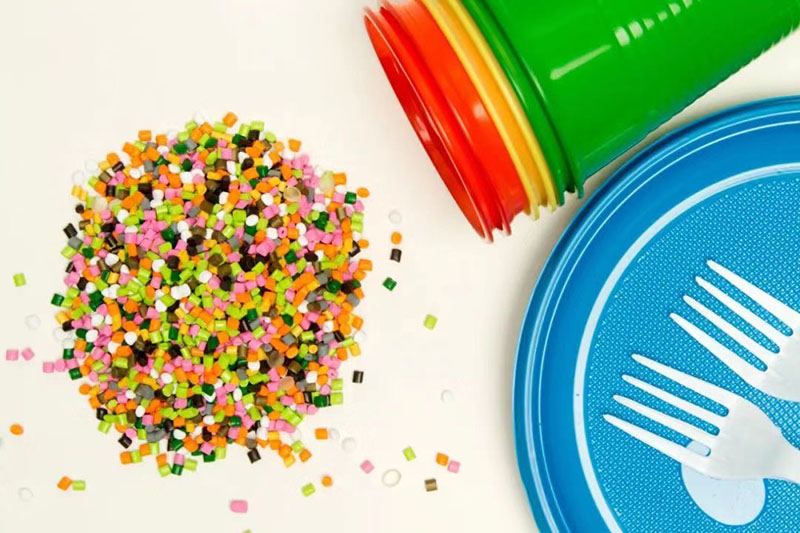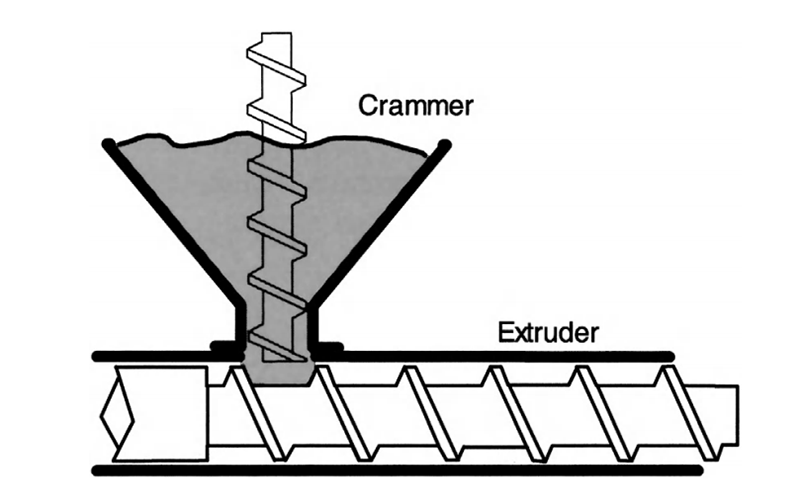01 Mechanical principles
The basic mechanism of extrusion is simple–a screw turns in the cylinder and pushes the plastic forward. The screw is actually a bevel or ramp that is wound around the central layer. The aim is to increase the pressure in order to overcome greater resistance. In the case of an extruder, there are 3 types of resistance to overcome: the friction of solid particles (feed) on the cylinder wall and the mutual friction between them when the screw turns a few turns (feed zone); adhesion of the melt to the cylinder wall; The resistance of the melt to its internal logistics when it is pushed forward.
Most single screws are right-handed threads, like those used in woodworking and machines. If viewed from behind, they are turning in the opposite direction because they do their best to spin the barrel back. In some twin screw extruders, two screws rotate opposite in two cylinders and cross each other, so one must be right-facing and the other must be left-facing. In other bite twin screws, the two screws rotate in the same direction and must therefore have the same orientation. However, in either case, there are thrust bearings that absorb backward forces, and Newton’s principle still applies.
02 Thermal principle
Extrudable plastics are thermoplastics–they melt when heated and solidify again when cooled. Where does the heat from melting plastic come from? Feed preheating and cylinder/die heaters may work and are important at start-up, but the motor input energy—the frictional heat generated in the cylinder when the motor turns the screw against the resistance of a viscous melt—is the most important heat source for all plastics, except for small systems, low-speed screws, high melt temperature plastics, and extrusion coating applications.
For all other operations, it is important to recognize that the cartridge heater is not the primary heat source in operation and therefore has less effect on extrusion than we might expect. Rear cylinder temperature may still be important because it affects the rate at which solids are transported in the meshing or feed. The die and mold temperatures should usually be the desired melt temperature or close to it, unless they are used for a specific purpose such as varnishing, fluid distribution, or pressure control.
03 Deceleration principle
In most extruders, the change in screw speed is achieved by adjusting the motor speed. The motor usually turns at full speed of about 1750rpm, but that’s too fast for one extruder screw. If it is rotated at such a fast speed, too much frictional heat is generated, and the residence time of the plastic is too short to prepare a uniform, well-stirred melt. Typical deceleration ratios are between 10:1 and 20:1. The first stage can be either geared or pulley, but the second stage is geared and the screw is positioned in the center of the last large gear.
In some slow-moving machines (such as twin screws for UPVC), there may be 3 deceleration stages and the maximum speed may be as low as 30 rpm or less (ratio up to 60:1). At the other extreme, some very long twin screws for stirring can run at 600rpm or faster, so a very low deceleration rate is required as well as a lot of deep cooling.
Sometimes the deceleration rate is mismatched to the task–too much energy is left unused–and it is possible to add a pulley set between the motor and the first deceleration stage that changes the maximum speed. This either increases the screw speed beyond the previous limit or reduces the maximum speed, allowing the system to operate at a greater percentage of the maximum speed. This increases the energy available, reduces the amperage and avoids motor problems. In both cases, the output may increase depending on the material and its cooling needs.
Press contact:
Qing Hu
Langbo Machinery Co.,Ltd
No.99 Lefeng Road
215624 Leyu Town Zhangjiagang Jiangsu
Tel.: +86 58578311
EMail: info@langbochina.com
Web: www.langbochina.com
Post time: Jan-17-2023


